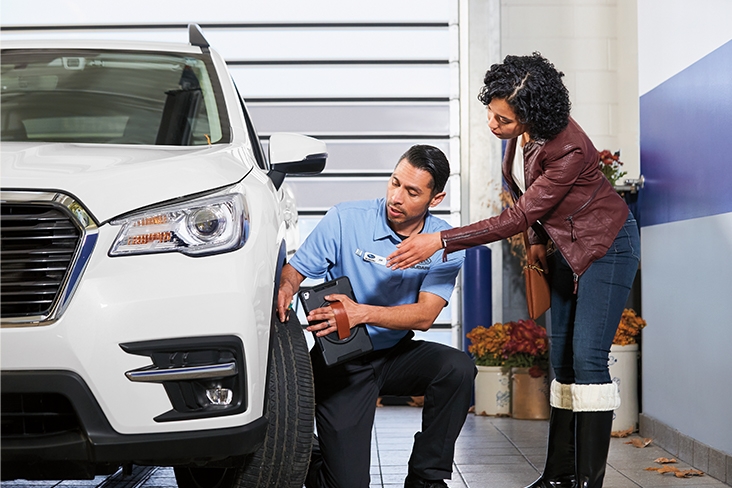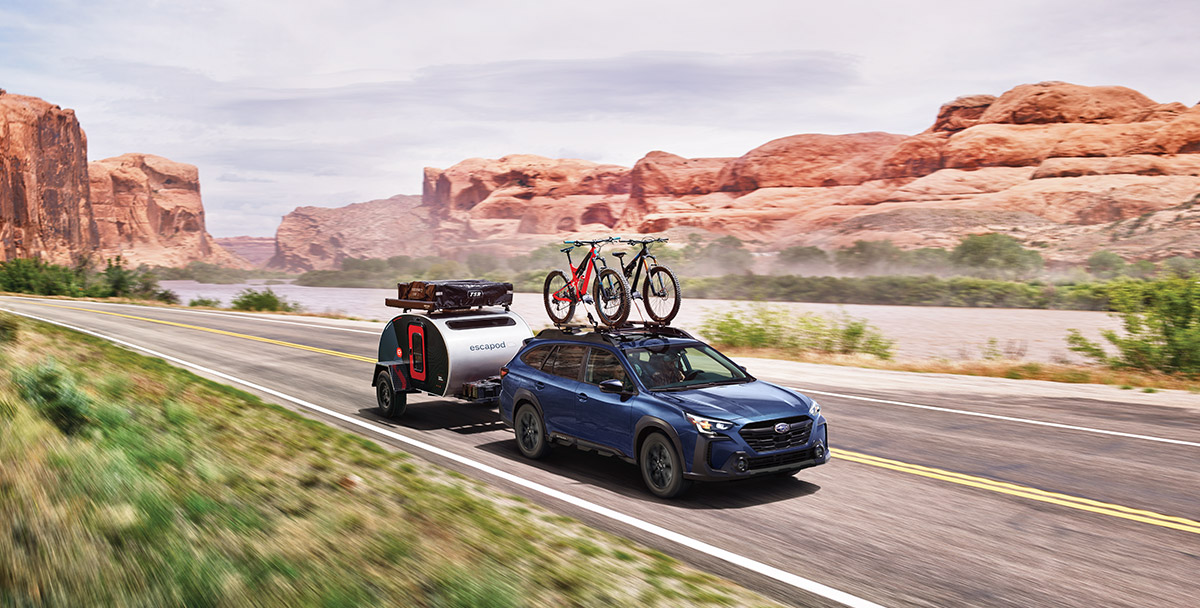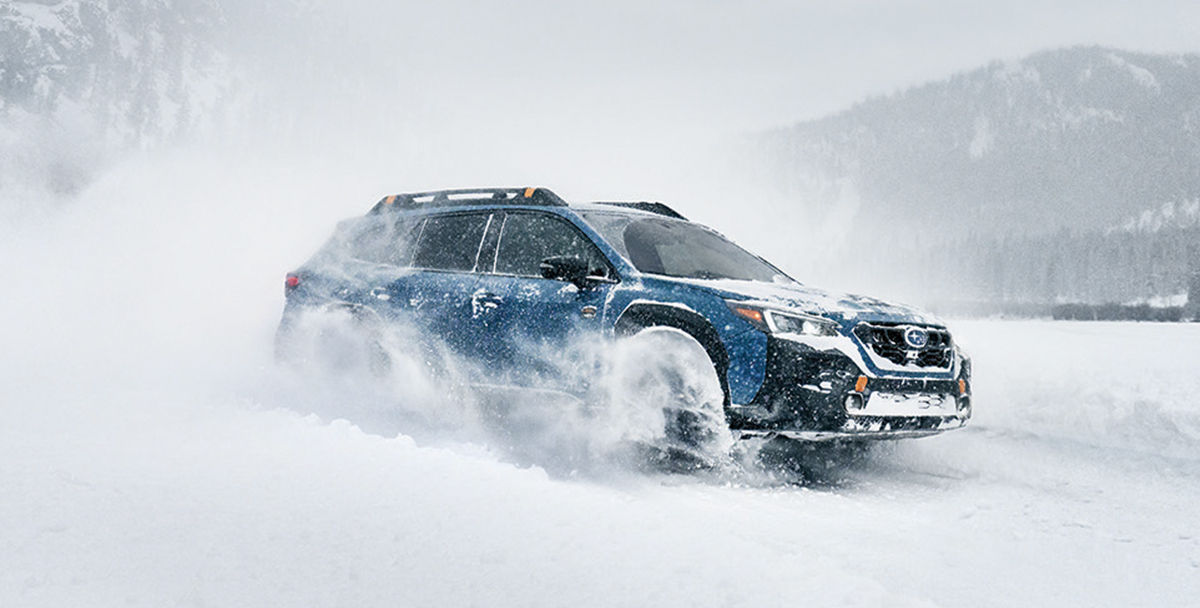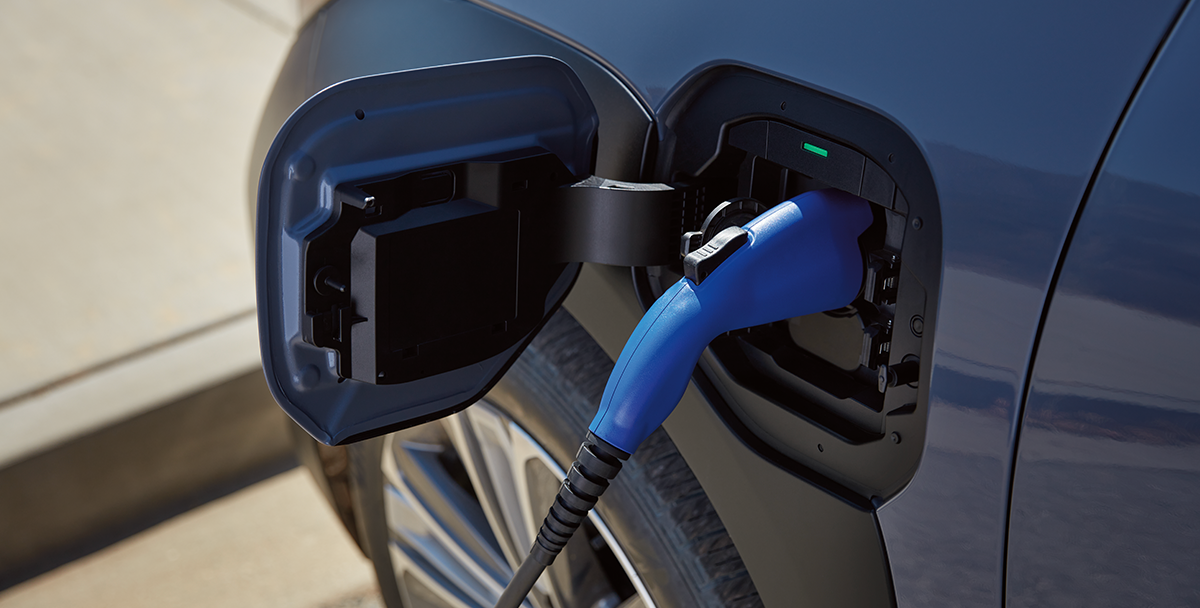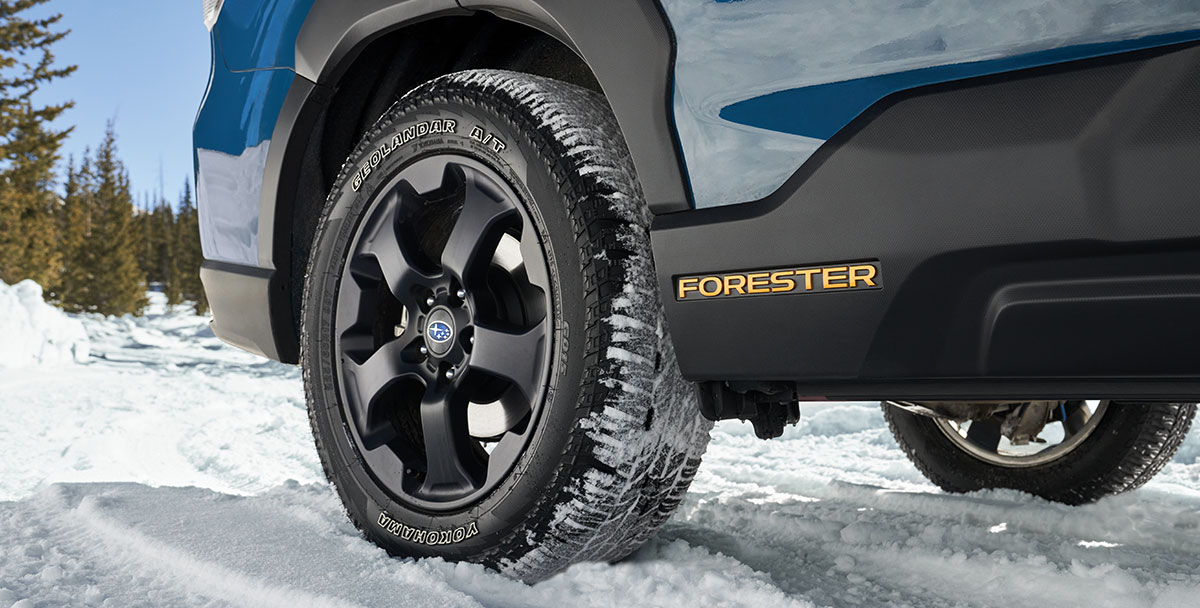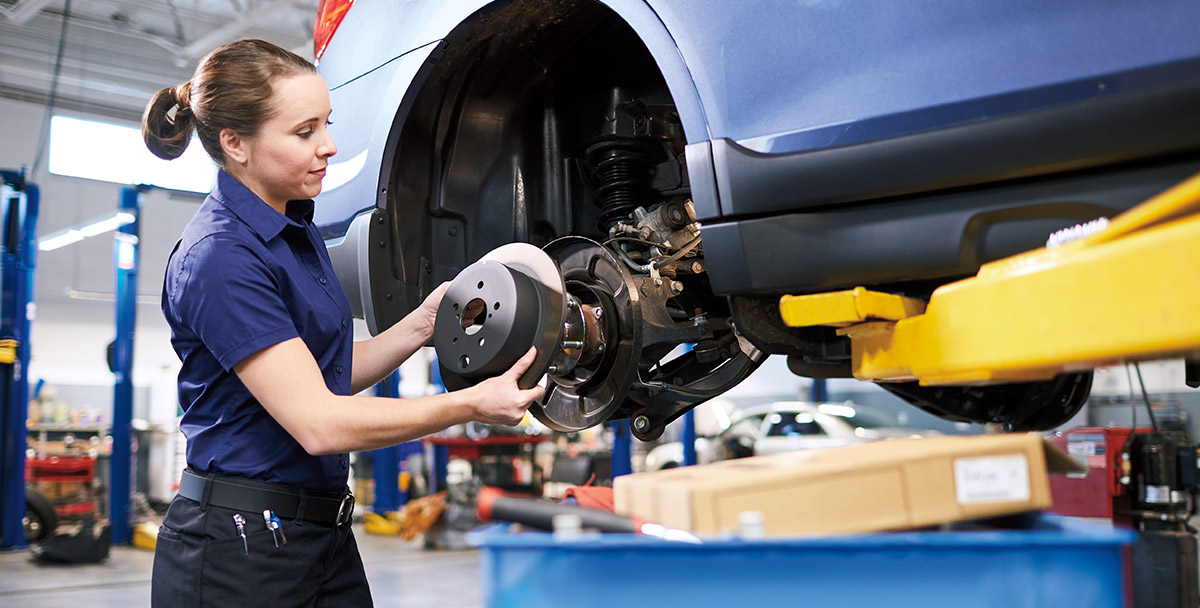No matter how carefully you drive your Subaru, eventually you’re going to need to replace the tires. Tires are a regular wear item – replacing them when they’ve reached the end of their usable life is key to your safety and your Subaru vehicle’s performance.
When should I replace the tires on my Subaru?
Aside from a puncture or major sidewall damage, two things are going to dictate when you need to replace your tires: treadwear and time.
The average U.S. driver covers about 13,476 miles each year. In general, treadwear is going to be the major indicator that it’s time for replacement.
You can roughly estimate how many miles the tires on your Subaru will last by using the Uniform Tire Quality Grade (UTQG) rating shown on the sidewall. These UTQG ratings provide information on treadwear, traction and temperature. The UTQG is displayed in three digits and two sets of letters (e.g., 800 A A). Here’s how to decode it:
- 800 – To obtain a grade, a manufacturer will run a tire on a 640-km course for 11,520 kilometers. Technicians measure the tread depth every 1,280 kilometers, and then they use the wear indicated to provide a projected tread life compared with a control tire. 400 means the tire lasted four times longer than the control tire, and 800 means it lasted eight times longer.
- A – The first letter is the traction rating indicating how well a tire can stop in wet conditions. The letter grades from best to worst are AA, A, B and C.
- A – The second letter is the temperature rating, showing how well a tire holds up to extreme heat. Letter grades from best to worst are A, B and C.

Once you’ve been driving on those tires for a while, it’s important to regularly check the tread depth. The graphic below explains the process using the top of George Washington’s head on a quarter. By the time the tires have worn to the wear bars in the tread pattern, they’re actually a hazard to drive on.
The second major consideration is time. Tires are subjected to incredible heat cycles, UV rays, road salt and other environmental contaminants, and they’ll wear out over time regardless of how many miles you’ve driven.
You should consider replacing tires once they’re six years old. Tire manufacturers include additives in rubber compounds that resist UV rays, temperature fluctuation and other environmental issues. Those chemicals will eventually break down, and at the extreme, the tires will begin to show small cracks known as “dry rot” that will affect the tire’s performance and your safety.
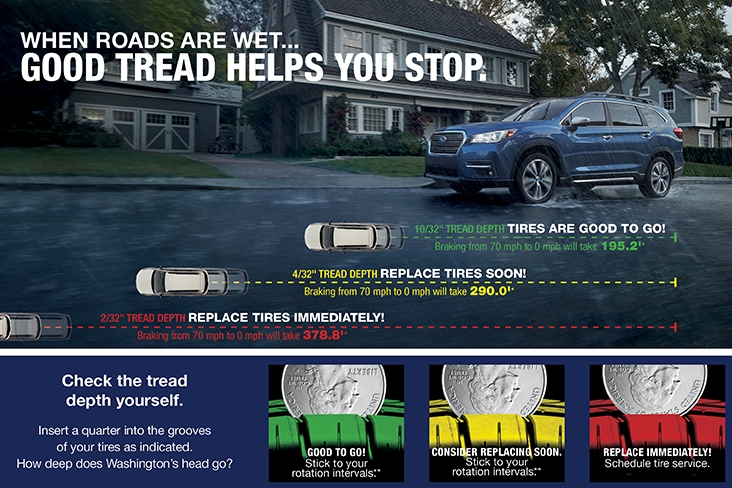
Since 2000, the U.S. Department of Transportation (DOT) National Highway Traffic Safety Administration has required tire manufacturers to provide a code that includes the age of tires. The number begins with the letters “DOT” followed by 12 digits in three four-digit groups. The date code is the last group of digits.
To decipher the date of your tires, the first two digits represent the week the tire was produced, and the second two digits represent the year. For example, if your tire’s date code is 4218, that indicates the tire was manufactured in the 42nd week of 2018 or sometime between October 15 and 21 that year.
How To Read the Sidewall Markings on Your Tires
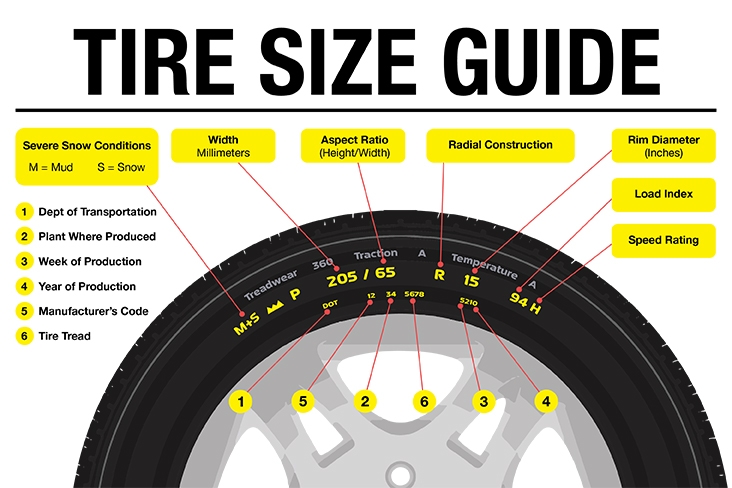
How To Tell Which Tires Are on Your Subaru
A good place to start is to determine which tires are on your Subaru vehicle. We’re primarily covering the 2020-2021 model year vehicles. If you own a current generation Subaru vehicle (2020-present Outback or Legacy, 2019-present Forester, 2019-present Ascent, 2018-present Crosstrek, 2016-present Impreza, 2015-present WRX and WRX STI, 2012-present BRZ), the tires on your vehicle may be the tires we’re talking about here, but the brands could vary from year to year.
Find your tire size below or visit the Subaru Tire Store.
| Model and Trim | Tire Brand | Tire Size |
|---|---|---|
| 2021 Ascent Base | Falken ZIEX ZE001A All Season | 245/60R18 105H |
| 2021 Ascent Premium (standard) | Falken ZIEX ZE001A All Season | 245/60R18 105H |
| 2021 Ascent Premium (optional) | Falken ZIEX ZE001A All Season | 245/50R20 102H |
| 2021 Ascent Limited | Falken ZIEX ZE001A All Season | 245/50R20 102H |
| 2021 Ascent Touring | Falken ZIEX ZE001A All Season | 245/50R20 102H |
| 2020 BRZ Limited | Michelin® Primacy™ HP | 215/45 R17 87W |
| 2020 BRZ tS | Michelin Pilot® Sport 4 | 215/40 R18 85Y |
| 2021 Crosstrek Base | Yokohama® Geolandar® G91F | 225/60R17 98H |
| 2021 Crosstrek Premium | Yokohama Geolandar G91F | 225/60R17 98H |
| 2021 Crosstrek Sport | Yokohama Geolandar G91F | 225/60R17 98H |
| 2021 Crosstrek Limited | Falken ZIEX ZE001A All Season | 225/55R18 98H |
| 2021 Crosstrek Hybrid | Falken ZIEX ZE001A All Season | 225/55R18 98H |
| 2021 Forester Base | Bridgestone® Ecopia® H/L 422 Plus | 225/60R17 99H |
| 2021 Forester Premium | Bridgestone Ecopia H/L 422 Plus | 225/60R17 99H |
| 2021 Forester Sport | Falken ZIEX ZE001A All Season | 225/55R18 98H |
| 2021 Forester Limited | Falken ZIEX ZE001A All Season | 225/55R18 98H |
| 2021 Forester Touring | Falken ZIEX ZE001A All Season | 225/55R18 98H |
| 2021 Impreza Base Sedan | Continental ProContact™ TX | 205/55R16 89V |
| 2021 Impreza Base 5-Door | Continental ProContact TX | 205/55R16 89V |
| 2021 Impreza Premium Sedan | Continental ProContact TX | 205/55R16 89V |
| 2021 Impreza Premium 5-Door | Continental ProContact TX | 205/55R16 89V |
| 2021 Impreza Sport Sedan | Yokohama Avid S34P | 225/40R18 88V |
| 2021 Impreza Sport 5-Door | Yokohama Avid S34P | 225/40R18 88V |
| 2021 Impreza Limited Sedan | Firestone® FT140 | 205/50R17 89V |
| 2021 Impreza Limited 5-Door | Firestone FT140 | 205/50R17 89V |
| 2021 Legacy Base | Yokohama AVID GT | 225/55R17 97V |
| 2021 Legacy Premium | Yokohama AVID GT | 225/55R17 97V |
| 2021 Legacy Sport | Yokohama AVID GT | 225/50R18 95V |
| 2021 Legacy Limited | Yokohama AVID GT | 225/50R18 95V |
| 2021 Legacy Limited XT | Yokohama AVID GT | 225/50R18 95V |
| 2021 Legacy Touring XT | Yokohama AVID GT | 225/50R18 95V |
| 2021 Outback Base | Yokohama AVID GT | 225/65 R17 102H |
| 2021 Outback Premium | Yokohama AVID GT | 225/65 R17 102H |
| 2021 Outback Limited | Yokohama AVID GT | 225/60 R18 100H |
| 2021 Outback Touring | Yokohama AVID GT | 225/60 R18 100H |
| 2021 Outback Onyx Edition XT* | Yokohama AVID GT | 225/60 R18 100H |
| 2021 Outback Limited XT | Yokohama AVID GT | 225/60 R18 100H |
| 2021 Outback Touring XT | Yokohama AVID GT | 225/60 R18 100H |
| 2021 WRX Base | Dunlop® Sport Maxx RT™ | 235/45R17 94W |
| 2021 WRX Premium | Dunlop Sport Maxx RT | 245/40R18 97W |
| 2021 WRX Limited | Dunlop Sport Maxx RT | 245/40R18 97W |
| 2021 WRX STI Base | Yokohama Advan Sport® V105G | 245/35R19 89W |
| 2021 WRX STI Limited | Yokohama Advan Sport V105G | 245/35R19 89W |
| 2019 WRX STI S209 | Dunlop SP Sport Maxx® GT600A | 265/35R19 |
*2021 Outback Onyx Edition XT has a full-size matching spare.
Should I replace my Subaru tires with the same tires from the factory?
There’s no harm in replacing your tires with exactly what came on your vehicle from the factory. But depending on the kind of driver you are, you could choose to replace them with something else.
Some Subaru models were built with very specific tires. For example, the 2019 Subaru WRX STI S209 features 265/35R19 Dunlop SP Sport Maxx GT600As, which are specific to that model. Of course, you can replace the tires with anything that fits, but there are performance parameters for which those tires were selected.
For most popular Subaru vehicles, though, the original equipment tires may have been selected for another reason. For example, certain tire models offer better fuel economy, lower road noise at highway speed or longer tread life. But if you live in the northern part of the country where snow, ice and cold temperatures are an issue, you may want to select a replacement tire that’s better for those conditions. On the other hand, if you’re more of a performance driver, you may be interested in a tire that grips better in warm weather, for which you’ll sacrifice a bit of longevity.
What should I consider when replacing my tires with something other than factory equipment?
The most important consideration when replacing your tires is what kind of driving you do and how a replacement tire will react to your driving style. We’ve developed a few driver profiles to help you decide which kind of driver you are and what kind of tires may be more suitable for the kind of driving you do.
Replacement Tires for 5 Types of Driver
Daily Commuter
You drive your Subaru back and forth to the office five days a week, and most of that commute is on the highway. You may face weather conditions that vary from blistering heat to face-stinging cold or from torrential rain to plowed snow in any given year.
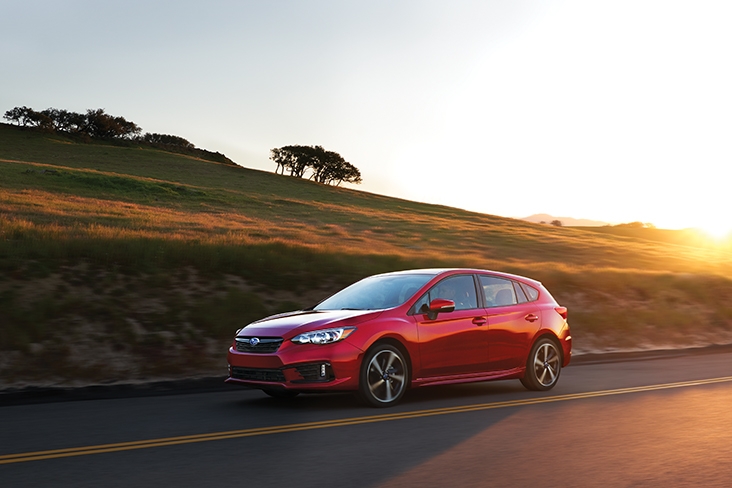
Recommended Type: All-Season Tires
Pros
- All-around, year-long performance in any weather condition
- Good tread life
- Low noise
Cons
- Less grip than a performance tire in wet and dry conditions
- Less traction in the winter than a dedicated winter tire
All-season tires are the jack-of-all-trades of the tire world. They provide good traction in wet and dry conditions, and they’re capable of decent performance in winter conditions, especially when paired with Subaru Symmetrical All-Wheel Drive. They offer good tread life and remain quiet at highway speeds. On the negative side, they don’t offer the winter weather traction of a winter tire or the stickiness of a really good summer performance tire.
Sport Driver
You’re interested in the performance aspects of a Subaru. Maybe you drive a WRX or the Sport trim of an SUV like the Crosstrek. You like clipping the apexes on the off-ramps and accelerating hard onto the freeway. You’re less concerned about tread life than you are in maximum grip in wet and dry conditions.

Recommended Type: High Performance or Ultra-High Performance All-Season Tires
Pros
- Significantly better performance than a lesser all-season tire
- Excellent wet and dry grip
Cons
- More expensive than a comparable all-season tire
- Less tread life than a comparable all-season tire
Most tire manufacturers offer several grades of all-season tires that provide more grip than a typical all-season tire. They maximize grip in wet and dry conditions, usually at the expense of tread life. These tires can truly transform the way your car behaves, though, especially if you’ve been driving on a set of older all-seasons.
Track Day Hero
You bought a WRX, WRX STI or WRX STI S209 with the desire to see just what you and that car could do on a closed course. You have little interest in how long those tires will last and great interest in how quickly you can get around a road course.
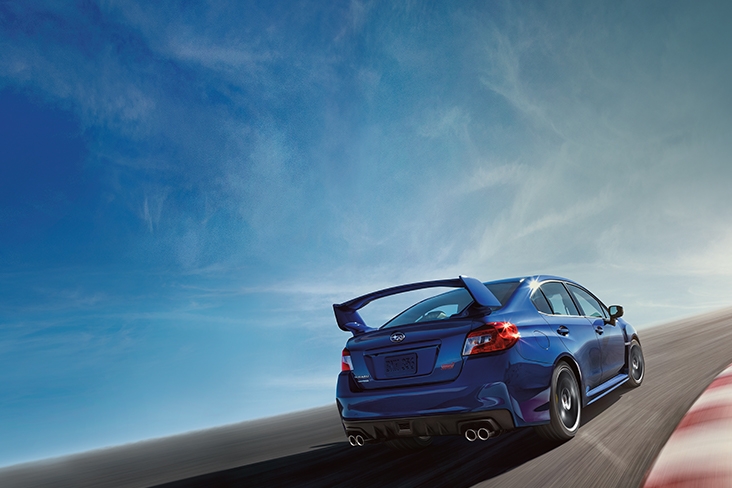
Recommended Type: Ultra-High, Max or Extreme Performance Summer Tires
Pros
- Outstanding dry grip
- Good wet grip
Cons
- The lowest possible tread life
- Unusable once the temperature gets close to freezing
These are the ultimate in grip. At the extreme performance end of the spectrum, the rubber compound is sticky to the touch and dirt and gravel will hold on until centrifugal force flings it off. These tires are at their best in hot, dry conditions, but they can offer better performance than all-season tires in wet conditions too. The downside is that they wear out in a hurry, and below 40 degrees Fahrenheit, they can react almost like driving on the ice. Most people using these tires will reserve them only for the racetrack.
Outdoor Enthusiast
You love to get into nature year-round, carrying kayaks, bicycles, rooftop tents, skis and snowboards along the way. You’re less concerned about highway noise than you are about how well a tire claws through mud as you reach the most remote campsite the state park has to offer.
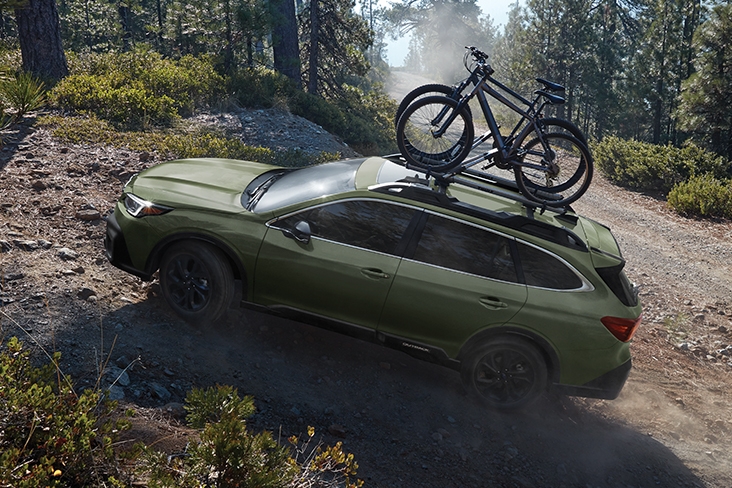
Recommended Type: All-Terrain Tires
Pros
- Excellent grip in mud, snow or deep sand
- Greatly improved sidewall strength to resist sidewall punctures
Cons
- Noisier on the highway than an all-season tire
- More expensive than an all-season tire
All-terrain tires are a good compromise between a typical all-season tire and the more heavily lugged mud terrain tires that are usually reserved for pickups and extreme performance off-road vehicles. They have large voids in the tread that help eject rocks, snow and mud, in addition to tread blocks that flex and help provide grip on ledges and slick tree roots.
These tires are often imprinted with the 3-Peak Mountain Snowflake symbol that indicates strong performance in winter weather. They’re not as capable in the snow and ice as a dedicated winter tire, but they’re a major step up from an all-season tire. Some manufacturers are now delivering all-terrain tires specific to the size requirements of crossover SUVs like the Forester, Outback and Crosstrek, so seek those out.
Winter Warrior
You live in an area where snow and ice are as frequent as the sunshine. Nothing makes you feel more confident than clawing your way home in a raging winter storm with the heated seats on max and the defrosters melting the snow off the glass.

Recommended Type: Dedicated Winter Tires
Pros
- The best winter grip available regardless of the conditions
- An even better upgrade when paired with Symmetrical All-Wheel Drive
Cons
- Not as adept at hard cornering on dry pavement
- Lower tread life
People think of these as “snow tires,” and they do perform well in the snow. But that’s not all. They’re designed to provide ultimate grip in the snow, ice and cold weather. Below freezing, the rubber compound in an all-season tire stiffens to an almost plastic consistency. Winter tires – which bear the 3-Peak Mountain Snowflake symbol on the sidewall – are constructed of a compound that retains its flexibility well below zero.
Winter tires are also equipped with voids in the tread that eject snow, in addition to thousands of tiny slices in the tread blocks called “sipes” that help the tread to twist and flex and grip through the snow, down to the asphalt below it.
The downside is that these tires offer nowhere near the dry pavement cornering performance of a good all-season tire. If you’re used to driving on all-season tires, you will feel the difference, and they tend to wear out faster and are noisier too. Most drivers who choose winter tires will have them mounted to a spare set of wheels to make the fall and spring changeovers easier.
FAQ
Q: Do I need to replace all four tires at once on my Subaru?
A: Most Subaru vehicles other than the BRZ have Symmetrical All-Wheel Drive as a standard feature, and you want to be sure that the tires have close to uniform tread depth at all four corners. In extreme cases where one tire is a different diameter than the others (e.g., when a temporary spare is mounted), the All-Wheel Drive warning light may flash.
Subaru models contain the following warning in the Owner’s Manual: “All four wheels should be fitted with tires of the same size, type and brand. Furthermore, the amount of wear should be the same for all four tires.”
Q: What’s the best tire for my Subaru?
A: It very much depends on what kind of driver you are. We’ve provided five driver profiles to help you narrow down your tire choices when it’s time for replacement.
Q: How long do tires typically last?
A: That largely depends on what kind of tires are on your Subaru. Original equipment tires are generally constructed with longevity in mind. The Bridgestone Ecopia H/L 422 Plus, for example, has a 640 A A UTQG rating, suggesting that it would last six times longer than the control tire it was tested against.
Regardless of the miles, though, be sure to check the tread depth using a quarter, as described in the graphic shown in “When should I replace the tires on my Subaru.” If the tread is worn almost to the top of George Washington’s head, it’s time to replace the tires no matter how many miles are on them.
Q: What’s the best tire pressure for my Subaru?
A: The optimal tire pressure for your Subaru is listed on the tire mounted in the jamb of the driver’s door. It will provide pressures with the cargo area empty and fully loaded. If you’re driving a Subaru from the 2007 model year or newer, you have an onboard tire pressure monitoring system.
In the early days, that system would illuminate to let you know that one of the four tires was low on air. Some Subaru models now have a readout on the dash that will show you the tire pressure in all four tires. Nevertheless, you should check your tire pressure monthly with a quality tire pressure gauge. Tire pressure checks are also a part of the maintenance performed whenever you come into a Subaru retailer for an oil change.
Q: How often should I rotate my tires?
A: Check your Subaru Warranty & Maintenance Guide or MySubaru. For 2015 or newer models, Subaru recommends that tires are inspected and rotated every 6 months or 6,000 miles, whichever comes first. Your Subaru retailer can take care of this service as part of your regular maintenance. Depending on the model, the mileage may differ.
